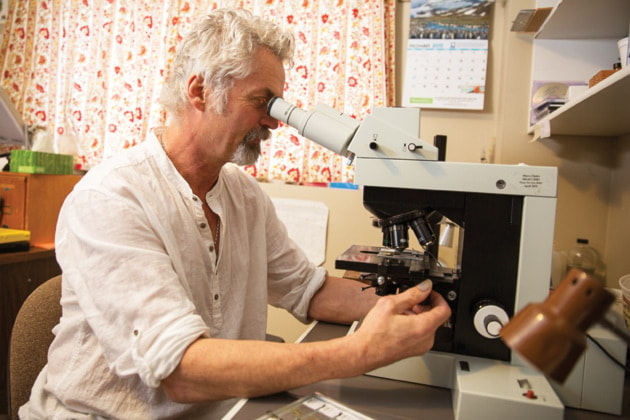As a rule, flies do not have a stellar reputation.
But to entomologists the world over, they are vital to healthy, functioning ecosystems.
And they’re disappearing before scientists can find them and discover their roles.
Enter local entomologist Art Borkent and colleague Brian Brown of the Los Angeles County Museum who, four years ago, received a grant from the US National Science Foundation to thoroughly study a 1,600-metre section of mid-elevation land in Costa Rica.
“So far, we have 2,800 species in an area the size of about five football fields and we haven’t finished yet; it will probably get to 3,200,” Borkent says with enthusiasm.
“This information is vital because it indicates what we are truly extincting on the planet right now,” he says. “Every clear-cut mountain in the tropics eliminates hundreds, if not thousands of species of insects and these are vital to functioning ecosystems.”
Borkent says the idea of cataloguing and studying species is not new but scientists who have attempted to do so have been swamped – too many species, too many specimens and not enough scientists to identify them.
“We boiled it right down, took a little chunk of cloud forest and collected it intensely, but with only one malaise trap,” he says describing the trap as a sort of pup tent without side walls where the flies fly in and upwards to an exit hole in the roof, before falling into a data trap containing a liquid.
The trapped flies were collected every week for one full year.
“Just from that, we kept five technicians in Costa Rica busy for three years,” he says, noting the techs did the prep work of pinning or putting all the flies on microscope slides, ready for 54 scientists from around the world to study them.
“Each one of these flies has a story; they’re doing something out there. They are the factory workers, the movers and shakers of the ecosystems,” Borkent says, noting the reason so many species can be packed into such a tight area is because they each have a specialized job. “There are flies that eat plants, decompose things, break down fungi, wood, anything that’s organic, they’re parasites, pollinators…”
Borkent says flies provide a window into what’s happening in a particular ecosystem.
But the windows are closing as more and more of the world’s tropical forests are being logged, destroying organisms in an ecosystem that cannot be renewed – and taking knowledge with them.
Borkent worries that billions of dollars are being spent on finding out what is happening on Mars or to see what kind of gases are on a comet, but ignoring planet Earth.
“As a society, we’re not spending the money on the world around us that is so vital to our health, the health of the planet and ultimately our survival,” he says. “We have a satellite circling the Earth saying how much oxygen we have and the rate of heat deflection instead of looking at the organisms and the many, many canaries in the coal mine.”
Not only are the tropics where most species live, they are home to the highest proportion of the world population.
Borkent and Brown have collaborated on other projects, including a two-volume work, How to Identify Flies in Central America.
That study only identified flies to the genus level but not to the species level.
Borkent is pleased Pope Francis has declared the need to protect the planet.
“I think we have a moral obligation to care for life on this planet and to do so we have to understand it,” he says. “And that is what we are doing.”
Borkent says the data is being compiled now, a process that should be completed by the end of March.
The study will appear in the prestigious Science, the peer-reviewed academic journal of the American Association for the Advancement of Science. Borkent is hopeful that will take place by late summer or early fall.
